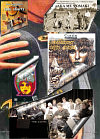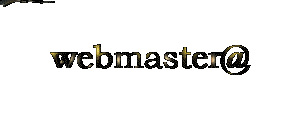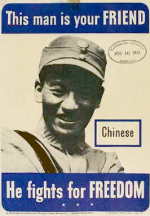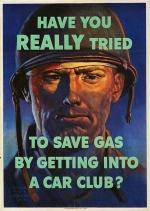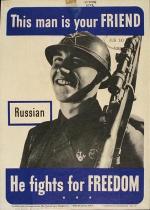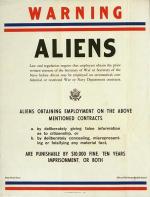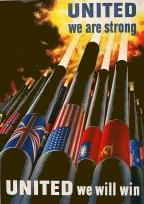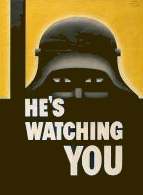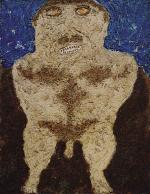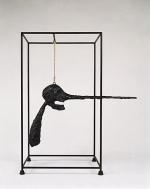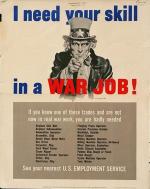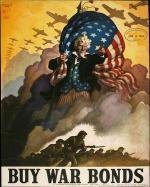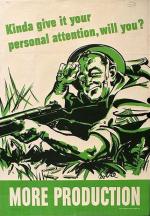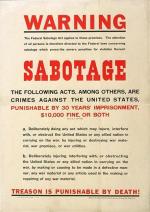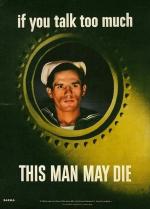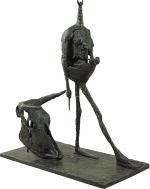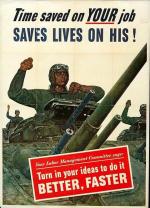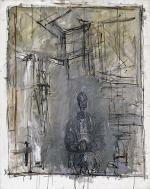Alexandria Virtual Cultural Centre of WA
Copyright © 1998- 2005 Nuclear Age Peace Foundation
The Korean War began in June 1950 with an attack by North Korean troops on South Korea. With the Soviet Union absent after having walked out and therefore unable to exercise its veto power, the United Nations Security Council authorized sending troops to defend South Korea. General MacArthur, commander of the United Nations forces, purportedly requested discretionary authority to use atomic weapons in December 1950. President Truman approved the use of atomic weapons on Manchuria if large numbers of Chinese troops joined in the fighting or if bombers were launched from Manchurian bases. Five days later, however, General MacArthur was removed from his command for repeatedly criticizing the limited objectives of the war.
On November 1, 1952, the U.S. raised the stakes in the nuclear arms race by detonating the first hydrogen bomb at Enewetak Atoll in the Marshall Islands. Less than a year later, the U.S.S.R. detonated its first thermonuclear weapon. In January 1954 Secretary of State John Foster Dulles announced a doctrine massive retaliation which could entail the use of nuclear weapons against communist aggression. Later that month the U.S. Navy launched the first nuclear-powered ship, the Nautilus.
By the mid-1950s, public protests of the nuclear arms race were building. In 1955, the year in which Albert Einstein died, he and Bertrand Russell issued a Manifesto warning of the dangers of continuing the nuclear arms race. Two years later in 1957 the great humanitarian Albert Schweitzer made a public "Declaration of Conscience" in which he stated that "the end of further experiments with atom bombs would be like early sun rays of hope which suffering humanity is longing for." The Committee for a Sane Nuclear Policy (SANE), an organization of private citizens seeking to alter official nuclear policies, was formed in 1957.
The International Atomic Energy Agency (IAEA) was established by the United Nations in 1957 to promote "peaceful" uses of nuclear energy. The same year saw the U.S.S.R. launch Sputnik I, the world's first artificial satellite. Great Britain became the third country to test a thermonuclear weapon.
In January 1958 Linus Pauling, a Nobel Laureate in Chemistry, and his wife, Ava Helen Pauling, presented U.N. Secretary Dag Hammarskjold a Petition to the United Nations Urging International Agreement to Stop the Testing of Nuclear Bombs Be Made Now signed by 9,235 scientists throughout the world. (For his efforts in organizing the world scientific community in opposition to nuclear testing, Pauling received a second Nobel Prize, this one for peace, in 1962.)
During the 1950s, some 4,600,000 persons died in warfare, and more than half were civillans.
Senator Brien McMahon (Connecticut) calls for an "all-out" nuclear weapons program.
January 27
In London British physicist Klaus Fuchs confesses to being a Soviet spy.
January 31
President Harry Truman announces that United States Atomic Energy Commission will proceed with work "on all forms of atomic weapons, including the so-called hydrogen or super-bombs." The development of the bomb is led by physicist Edward Teller, who believes it is vital for the United States to develop the hydrogen bomb before the Soviet Union does.
February
Joint Intelligence Committee predicts build up of Soviet atomic arsenal and possible attack against U.S. "at earliest possible moment."
February 5
Twelve leading U.S. physicists, including Hans Bethe, speak out against President Truman's decision to build the hydrogen bomb.
February 24
U.S. Joint Chiefs of Staff request "all out effort to build H-bomb."
March 1
In the United Kingdom, physicist Klaus Fuchs is sentenced to 14 years for betraying atomic secrets to Soviet agents; the evidence is used later to incriminate Julius and Ethel Rosenberg, who were condemned to death.
April 7
National Security Council releases document NSC-68 that warns of surprise attack by Soviet Union once "it has sufficient atomic capability."
April 11
A B-29 Bomber carrying a nuclear bomb crashes into a mountain near Kirtland Air Force Base in New Mexico. The bomb is destroyed but the accompanying nuclear capsule, which had not been inserted into the bomb, remains intact.
June 16
Calculations by U.S. mathematicians Stanislaw Ulam and Cornelius Everett appear to prove that Edward Teller's "classical super" design for hydrogen bomb does not work.
June 25
North Korea invades South Korea.
September 30
NSC-68 becomes cornerstone of U.S. foreign policy and defense spending is increased by more than 350%.
November 30
During press conference, President Truman confirms that U.S. government considered using nuclear weapons in Korea.
December
First production of electricity from atomic fission occurs at the National Reactor Testing Station in Idaho.
December 9
General Douglas MacArthur requests discretionary authority to use atomic weapons during the Korean War.
The second British plutonium reactor starts operation in Windscale, Cumberland, to manufacture plutonium for nuclear weapons. In 1957 it caught fire and caused radioactive contamination of a wide area. To help the public forget, the town was renamed Sellafield.
January
U.S. mathematician Stanislaw Ulam proposes radically new design for hydrogen bomb. Edward Teller embraces and refines the concept.
January 11
President Harry Truman approves the establishment of the Nevada Proving Grounds, later called the Nevada Test Site (NTS).
January 27
The first atmospheric test at the Nevada Test Site, Able, takes place 1060 feet above Frenchman Flat.
March 29
Julius and Ethel Rosenberg are convicted and sentenced to death at the Federal Courthouse in Foley Square, New York City, for passing information on atomic weapons to the USSR.
April 4
Edward Teller submits report on new design for hydrogen bomb.
April 5
U.S. Joint Chiefs of Staff order atomic retaliation against air bases in case of "a major attack" against UN forces in Korea.¬
April 6
President Harry Truman approves military request to use atomic weapons in Manchuria if large numbers of Chinese troops join the Korean War or if bombers are launched against United Nations forces from Manchurian bases.¬
April 11
President Harry Truman discharges General General Douglas MacArthur for insubordination after MacArthur repeatedly criticizes the limited objectives of the war in Korea.
May 9
U.S. nuclear test shot "George" (Operation Greenhouse) confirmes for the first time that a fission device can produce the conditions needed to ignite a thermonuclear reaction.¬
September 17
U.S. physicist Marshall Holloway is named leader of hydrogen bomb project. Edward Teller leaves Los Alamos, New Mexico shortly afterwards.
September 24
Soviet Union conducts its second nuclear test, an improved plutonium bomb.
December
A four-man team at RAND begins to study the likely effects of the hydrogen bomb.
January 11
The United Nations abolishes the Atomic Energy Commission and establishes the Disarmament Commission in its place.
February 4
The United Nations Disarmament Commission holds its first meeting.
March
The Royal Air Force and the U.S. Strategic Air Command begin flying photographic and radar reconnaissance missions over Soviet Union.
April 22
For the first time, the American media are permitted to cover live, and the public witnesses by television, the detonation of a nuclear device (a 31 kiloton atmospheric test known as Operation Big Shot) at the Nevada Test Site.
September
A second U.S. nuclear weapons laboratory is established in Livermore, California.
October 3
The United Kingdom conducts its first nuclear weapon test, Hurricane, at Monte Bello Island, off the northwest coast of Australia.
November 1
The United States detonates the first hydrogen bomb, 10.4 megaton Mike, at Enewetak Atoll in the Marshall Islands. The explosion is 500 times more powerful than the bomb exploded at Nagasaki.
December
President-elect Dwight Eisenhower and staff develop "New Look" defense policy relying primarily on power of atomic forces.
J. Robert Oppenheimer is accused of disloyalty and of communist contacts. President Dwight Eisenhower suspends his security clearance, and in a full hearing the following year he is not reinstated. While many scientists defended him, Edward Teller claimed Oppenheimer delayed working on the hydrogen bomb. In 1958 an AEC review finds the proceedings to be "a primitive abuse of the judicial system."
January
In his final State of the Union address, President Truman declares nuclear war impossible for "rational men."
March 5
Soviet leader Joseph Stalin dies.
March 17
Scientists study the impact of a nuclear blast on a fabricated American city during the test Annie at the Nevada Test Site. The test is part of Operation Cue, a series of projects conducted by the Federal Civil Defense Administration to evaluate the effects of nuclear detonations n civilian communities.
March 20
Nikita Khrushchev becomes first secretary of Communist party.
June 19
Julius and Ethel Rosenberg, sentenced as atomic spies in 1951, are executed by the U.S. [see March 29, 1951
June 26
Nikita Khrushchev authorizes arrest of Lavrentii Beria, head of the secret police and the Soviet bomb project.
July
In a Foreign Policy article U.S. physicist Robert Oppenheimer calls for greater openness in atomic policy debate.
July 27
Armistice is signed ending the war in Korea.
August
General Edmundson leads "Operation Big Stick." The mission requires him to take twenty B-36s, armed with nuclear weapons, to Okinawa in Japan.
August 8
Soviet Premier Georgi Malenkov announces that USSR possesses the hydrogen bomb. The development of the hydrogen bomb in the US and the Soviet Union is regarded as the start of the Cold War arms race.
August 12
The Soviet Union tests its first simple fusion bomb, Joe 4, at the Semipalatinsk test site. The test is based on Andrei Sakharov's"Layer Cake."¬
October 15
Great Britain explodes its second atomic bomb "Totem-1" in Central Australia, the first British weapons test to be held on the Australian continent.
November 7
Lawyer William L. Borden sends letter to FBI Director J. Edgar Hoover accusing Robert Oppenheimer [Oppenheimer Hearings] of being a Soviet spy.
December 3
President Dwight Eisenhower orders a "blank wall" be placed between Robert Oppenheimer [Oppenheimer Hearings] and atomic secrets.
December 8
President Dwight Eisenhower, in a United Nations address, proposes Atoms for Peace, a program to extend American aid to other countries for establishing nuclear reactors for peaceful research. Eisenhower calls for the nuclear weapons states to give part of their nuclear stockpiles to a United Nations-supervised "bank of fissionable materials" in an attempt to strip nuclear energy of "its military casing and adapt it to the arts of peace." Text¬
December 23
Atomic Energy Commission sends letter with charges to U.S. physicist Robert Oppenheimer [Oppenheimer Hearings].
Nikita Khrushchev authorizes the execution of Lavrentii Beria, the former head of Soviet secret police and the Soviet bomb project.
January 7
In his State of the Union address, President Eisenhower claims that 2,200 employees have been fired as security risks.
January 12
Secretary of State John Foster Dulles announces the policy of massive retaliation. It states that "local defenses must be reinforced by the further deterrent of massive retaliatory power" and "the way to deter aggression is for free communities to be willing and able to respond vigorously at places and with reasons of our own choosing." Text
January 21
The USS Nautilus (SSN 571), the world's first nuclear-powered submarine, is launched by the United States Navy.February
Soviet physicists Andrei Sakharov and Igor Tammare receive Hero of Socialist Labor and Stalin Prize for their work on the "Layer Cake."
March 1
Bravo, a 17 megaton hydrogen bomb detonated by the United States at Bikini Atoll, in the Pacific, contaminates a Japanese fishing boat, Lucky Dragon, and residents of Rongelap and Utirik.
March 4
J. Robert Oppenheimer sends written response to the Atomic Energy Commission charges against him.
April 10
President Dwight Eisenhower sends Secretary of State John Foster Dulles to offer two atomic bombs to the French for use in their war against the Vietnamese. The offer is refused.
April 12
Hearings begin at Atomic Energy Commission on J. Robert Oppenheimer. Groves Testimony
June 28
Atomic Energy Commissioners vote against U.S. physicist J. Robert Oppenheimer and uphold withdrawal of security clearance.
September 12
U.S. Joint Chiefs of Staff recommend using atomic bombs on China in conflict over Chiang Kai-shek's troops on Quemoy and Matsu islands.
September 13
Soviets mass 40,000 soldiers in two formations on plains of Kazakhstan and explode a nuclear weapon between them.
September 14
Soviet Union conducts nuclear test at the Totskoye test range in which it purposely exposes some 45,000 military troops to the explosion and radioactive fallout in order to examine their performance in a mock battle.
September 23
U.S. Joint chiefs of Staff again call for nuclear attacks on China after China sentences 13 U.S. airmen shot down over China during the Korean War.
March 15
U.S. Secretary of State John Foster Dulles tells press that the U.S. is seriously considering using atomic weapons over Quemoy-Matsu dispute with China.
March 16
President Eisenhower states publicly, "A-bombs can be used... as you would use a bullet." This causes an international uproar. NATO foriegn ministers oppose a nuclear attack on China.
April 18
Albert Einstein dies.
May 10
The Soviet Union unexpectedly accepts UN proposal for nuclear disarmament.
May 14
Warsaw Treaty of Friendship, Cooperation and Mutual Assistance establishes the Warsaw Pact, which provides for a unified military command for Eastern European nations with headquarters in Moscow.
May 18
The first patent for a nuclear reactor, license number 2,708,656, is issued by the United States Patent Office to the Atomic Energy Commission. The patent discloses the method by which Enrico Fermi and Leo Szilard achieved their self-sustaining chain reaction on December 2, 1942.
June 15
President Eisenhower evacuates the White House in Operation Alert air raid drill.
July 18
Big Four summit begins in Geneva. President Eisenhower unveils his proposal for "open skies" and an exchange of military secrets.
July 9
The Russell-Einstein Manifesto is issued, which addresses the dangers of thermonuclear weapons. The Manifesto states, "In view of the fact that in any future world war nuclear weapons will certainly be employed, and that such weapons threaten the continued existence of mankind, we urge the Governments of the world to realize, and to acknowledge publicly, that their purpose cannot be furthered by a world war, and we urge them, consequently, to find peaceful means for the settlement of all matters of dispute between them."
August 8
An International Conference on the Peaceful Uses of Atomic Energy takes place in Geneva, Switzerland. Seventy-three countries send 1,428 delegates.
September 6
U.S. delegate Harold Stassen announces that America no longer supports UN plan calling for complete nuclear disarmament.
October 25
Sadako Sasaki, a twelve-year-old Japanese student and victim of the Hiroshima bombing, dies of leukemia. Influenced by a Japanese legend that says if one can fold 1000 cranes, one's wish will come true, Sadako manages to fold 646 before she dies. Her fellow students complete the 1000 cranes to fulfill Sadako's wish of achieving world peace. One of her poems states, "I will write peace on your wings, and you will fly all over the world."
November 22
First Soviet thermonuclear bomb is dropped in Kazakhstan from an aircraft in test, with a force equivalent to 1.6 megatons of TNT.
February 14
Nikita Khrushchev attacks Stalin and "cult of personality."
March
At UN, U.S. maintains that its opposition to nuclear disarmament is based on belief that atomic weapons are a "powerful deterrent to war."
July 1
World's first nuclear power station (5 megawatts) begins operation at Obinsk in Russia.
July 27
A U.S. bomber crashes into a storage igloo containing three Mark 6 nuclear bombs at Lakenheath Royal Air Force base in the United Kingdom. The resulting fire damages the bombs, but fails to ignite their conventional explosive triggers.
August
World's first full-scale nuclear power plant (50 megawatts) begins operation at Calder Hall in England.
October 26
Statute of International Atomic Energy Agency is signed at New York.
November
The Soviet Union threatens to use rockets against London, Paris and Israel if the three nations do not end their invasion of Egypt during the Suez Canal crisis. Although the threats are generally regarded as a bluff (and did not specify a nuclear attack against the targets), the overall danger of a Cold War escalation influences the US to pressure France and Britain to accept a cease-fire.
On the Beach by Nevil Shute, which presents a fictional account of the devastating effects of a nuclear war, becomes an international best-seller.
March 10
A U.S. Air Force B-47 bomber flying from Florida to Europe with two capsules of nuclear materials for bombs fails to meet its aerial refueling plane. No traces are ever found.
April 24
In a radio broadcast entitled Declaration of Conscience, Albert Schweitzer states, "The end of further experiments with atom bombs would be like early sun rays of hope which suffering humanity is longing for."
May 15
The United Kingdom tests its first thermonuclear weapon at the Christmas Islands in the Pacific.
May 25
The Rome Treaties establish the European Atomic Energy Community (Euratom) and the European Economic Community (EEC).
July 2
The first conference of the Pugwash Movement is held in Pugwash, Nova Scotia to discuss social responsibility and disarmament. Twenty-two scientists from ten countries attend. The stimulus for the gathering is the 1955 Manifesto issued by Bertrand Russell and Albert Einstein.
July 12
The first commercial use of nuclear power occurs when a test reactor in Santa Susana, California transmits power to the Southern Californian grid.
July 29
The United Nations establishes the International Atomic Energy Agency (IAEA) to promote peaceful uses of nuclear energy.
August 6
The first demonstration against nuclear weapon testing, with civil disobedience, takes place at the Nevada Test Site and results in the arrest of 11 protesters.¬
September
The US sets off its first underground nuclear test in a mountain tunnel in the remote desert 100 miles from Las Vegas.
September 29
A breakdown in the cooling system of a tank holding 70,000-80,000 tons of radioactive sludge causes an explosion at the Mayak complex in the Soviet Union. A plume of radioactive fallout of over two million curies is released.
October 1
The International Atomic Energy Agency 's first general conference opens in Vienna.
October 4
The Soviet Union stuns Americans by launching a missile carrying the earth's first artificial satellite, Sputnik I. If Soviet scientists can launch a Sputnik, US analysts reason they will soon be able to loft nuclear warheads to the US. The implications are profound, decreasing the warning times of a nuclear launch from hours to minutes. There is no known means of defending against a ballistic missile attack.
November 8
The United Kingdom successfully tests its first hydrogen-fusion weapon.
November 15
The Committee for Sane Nuclear Policy (SANE) is founded.
December 2
In Shippingport, Pennsylvania, the first full scale commercial nuclear power reactor begins operation.
A statue of Sadako Sasaki holding a golden crane in outstretched hands takes its place in Hiroshima Peace Park. Funds collected by Sadako's friends and young people throughout Japan help build the monument. [see October 25, 1955]
January
The United States constructs a special concrete and steel bomb shelter in the hills of West Virginia for Congress to convene in during a nuclear war.
January 15
Linus Pauling and his wife Eva Helen Pauling present to United Nations Secretary-General Dag Hammarskjold a "Petition to the United Nations Urging the International Agreement to Stop the Testing of Nuclear Bombs Be Made Now," signed by 11,021 scientists.
February 17
The Campaign for Nuclear Disarmament in the United Kingdom holds its first meeting.
March 11
A B-47 bomber accidentally drops a nuclear weapon over Mars Bluff, South Carolina. The conventional explosive trigger detonates, leaving a crater 75-feet wide and 35-feet deep.
March 25
The German Bundestag approves deployment of U.S. nuclear weapons in West Germany.
September 6
In the second Quemoy-Matau crisis with China, General Twining of U.S. Joint Chiefs of Staff asks President Eisenhower to give the 7th Fleet Commander authority to order nuclear strikes against China. Eisenhower refuses.
September 7
Soviet Union informs Eisenhower that they come to China's aid in the event of a U.S. nuclear attack on China.
September 19
Soviet Union repeats its warning to the U.S. that it will come to China's aid in the event of a U.S. nuclear attack on China.
October 31
President Dwight Eisenhower declares a moratorium on all nuclear testing with the understanding that the Soviet Union will also honor the moratorium. This moratorium will last until September 15, 1961.
July 21
The United States launches the world's first nuclear-powered merchant ship, the Savannah.
October 31
The United States deploys the first operational intercontinental ballistic missile (ICBM), the Atlas D.
December 1
The Antarctic Treaty establishes that "any nuclear explosion in Antarctica and the disposal there of radioactive waste material shall be prohibited."
Copyright © 1998- 2005 Nuclear Age Peace Foundation
Virtual Cultural Centre of WA



